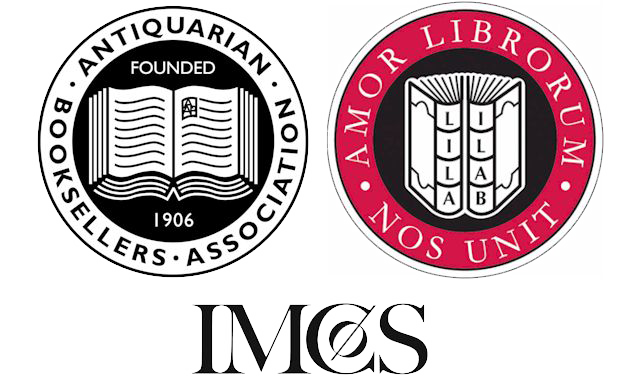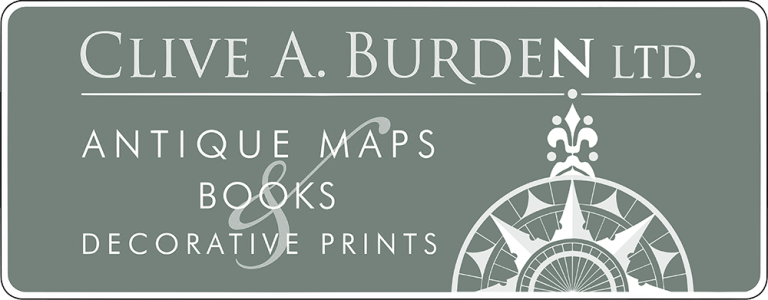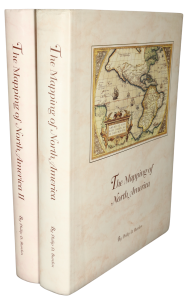Rare Maps and Prints
- World & Celestial
- North America
- West Indies, South & Central America
- British Isles
- British Isles
- English counties
- Large-scale
- Bedfordshire
- Berkshire
- Buckinghamshire
- Cambridgeshire
- Cheshire
- Cornwall
- Cumberland
- Derbyshire
- Devon
- Dorset
- Durham
- Essex
- Gloucestershire
- Hampshire
- Herefordshire
- Hertfordshire
- Huntingdonshire
- Islands
- Kent
- Lancashire
- Leicestershire
- Lincolnshire
- Middlesex
- Norfolk
- Northamptonshire
- Northumberland
- Nottinghamshire
- Oxfordshire
- Rutland
- Shropshire
- Somerset
- Staffordshire
- Suffolk
- Surrey
- Sussex
- Warwickshire
- Westmoreland
- Wiltshire
- Worcestershire
- Yorkshire
- Wales
- Scotland
- Ireland
- Western Europe
- Eastern Europe
- Middle East
- Africa
- Asia
- Australasia & Pacific
- Decorative Prints
- Title Pages
Mr. Philip D. Burden
P.O. Box 863,
Chalfont St. Giles, Bucks HP6 9HD,
UNITED KINGDOM
Tel: +44 (0) 1494 76 33 13
Email: enquiries@caburden.com
POWDER HORNS
Powder horns are made from cow or ox horns and were found to be ideal for carrying gunpowder. They were lightweight, waterproof, plentiful, and cheap. To ensure that he received his own horn back went sent for refilling, a soldier would often mark his horn in some way to identify it. This could take the form of a mark, a name, or a more decorated form. The zenith of engraved horns is American from the 1750s through the American Revolution. Whilst some were clearly engraved in Britain, the majority were worked on in America. Stephen V. Grancsay, curator at the Metropolitan Museum of Art in New York, once estimated based on a study of nearly 1,200 horns, that only about 10-15% could be considered to have been engraved with maps. Most of the horns with maps surviving depict the much travelled and hostile routes between New York and Canada; these being generally the Hudson-Lake Champlain and Hudson-Mohawk River routes. To quote Grancsay ‘Horns with maps of New England and of Pennsylvania are much rarer than those with maps of New York’. Here we have one of even further afield.
In the eighteenth-century horns were carved using one of two methods. Either the use of a knife like a jackknife which most soldiers would have or a burin (graver) which is used to push through and gouge out metal or soft material. A knife would displace material to the sides leaving some raised displayed material, a graver leaves a trench in the material. The more polished work was often undertaken by gunsmiths or silversmiths. Du Mont stated that ‘the finest horns, which we term ‘professionally’ engraved were probably done by army topographical engineers. Soot or a plant dye was often rubbed over the engraved area to enable the carving to stand out more as here. Over time the engraved powder horn became more of an item of ornamentation. This is emphasised by its more highly polished finish. Powder horns were used as long flintlock systems were used for firearms; that is, until cap locks widely replaced them in the second quarter of the 19th century. Grancsay’s reference work listing 1152 horns identifies a very few depicting Detroit, all within a much broader map often extending to the Atlantic coast. None refer to Fort Dearborn.
No. 100 – No map, a gift from W. Harffy to Tayadenega (Captain Joseph Brant, Mohawk Chief) dated 1789
No. 330 – A map with plans of Forts Pitt and Detroit, n.d.
No. 1105 – A general map with plan of Fort Detroit
No. 1106 – A general map with 4 views including Detroit
HISTORICAL CONTEXT
Fort Detroit was built by the French in 1701 as a fur trading post. The Treaty of Paris in 1763 formally transferred possession to the British and by the time of the American Revolution it had a population above 2,000. Although possession passed to the United States of America following the War of Independence, the British remained in control. The Jay Treaty of 1795 settled this and other issues between the two countries and the British forces evacuated Fort Detroit. Many of the loyalists fled Detroit across the river to settle Sandwich (now Windsor) which was established in 1797. The same British forces moved to the entrance to Lake Erie where they constructed Fort Maldon to enable control of the region.
FORT DEARBORN
The site of present-day Chicago was first seen by French explorers in the 1670’s and recognized as an important place as a portage between the Great Lakes and the Mississippi River. In recognition of this the United States constructed Fort Dearborn at the mouth of the Chicago River in 1803. It was named for Henry Dearborn (1751-1829), the U.S. Secretary of War (1801-09). As a major-general during the War of 1812 he proved rather inept. Constructed nearby was the John Kinzie (1763-1828) trading post. At the time this region was still a frontier and conflict erupted periodically with the native American population. The War of 1812 provided the opportunity for the local Potawatomi Indians to burn the fort down on 15 August 1812. The settlement remained devoid of people until the fort was rebuilt in 1816 with a double wall of wooden palisade, various barracks, garden and other buildings. In 1830 the surveyor John Thompson filed a plan to recognise the site as a town to be known as Chicago. On 12 August 1833 it was incorporated with a population of 350.
In 1813 one of the most decisive US victories took place at the Battle of Lake Erie. The US naval forces were under Captain Oliver Hazard Perry. They defeated the British Force under Captain H. Barclay who were defending Fort Maldon. After the battle it was burnt to the ground. The Treaty of Ghent in February 1815 formerly ended the war. It restored the border between the United States and British North America. The land surrounding Fort Malden was returned to the British.
ANALYSIS OF THE HORN
This horn has been personally examined by Philip Zea and David Bosse of Historic Deerfield, Massachusetts. Experts in the field and curators of the Guthman Collection of 75 powder horns. They concluded that it was genuine and dating from the 1820s. “The whole presentation of the horn seems commemorative to me – meant to be held rather than regularly used …” (Zea). He went on to state “I might say that yours is the latest fully carved horn that I have ever seen.” The map of the Detroit River on the horn clearly relates to the War of 1812. The magnificent 14-centimetre (five and a half inch) view entitled ‘A prospect of Fort Deerborne’ provides us with further information.
The earliest known view of Fort Dearborn is by Major Francis Smith Belton (1791-1861) from 1817 which was only recently discovered as part of a group of 5 pencil and watercolour sketches all dated 1816-17. The view is taken from some distance offshore and includes a two-masted vessel in the foreground. The powder horn image bears no relation to it.
Our view of Fort Dearborn post-dates 1816 as it depicts the second fort on the site. To its right is the famous trading post of John Kenzie with the four tall slim trees in the garden. Buildings far left are on the Indian Trail to the Fort. The largest clue to a date though might be provided by the building in between the fort and Kinzie’s property. It is difficult to determine exactly which building this might be, but one possibility is Wolf Tavern, situated at Wolf Point, at the junction of the North and South branches of the Chicago River. James Kinzie (1793-1866), John Kinzie’s son, built the tavern on this site in 1828. By 1833 it had a painted sign hung up on a post taller than the building. Whilst not something you might imagine would be included on the horn were it present, its absence helps towards a conclusion that this image dates from between 1828 and 1833. Indeed, it is highly likely to have been derived from Juliette Kinzie’s drawing in 1831, the year in which she first visited Chicago as the new wife of John Harris Kinzie.
Maybe, it could have been produced for sale at Kinzie’s trading post! Indeed, bearing in mind the use of a burin and the engraving skills required it is interesting to note that John Kinzie was apprenticed to George Farnham, a silversmith in Quebec. It is known that items of silver have been found in archaeological sites in America. Either way, with Kinzie’s drawing now lost, this may well be the second earliest surviving image of Fort Dearborn and Chicago.
The engraving is concluded with three further items. An image of an unidentified two mast schooner, possibly a packet boat. With no portholes shown it would seem unlikely that this is a naval vessel. To its right are the arms of the United States Marine Corps with an American Bald Eagle holding aloft the flag, a cannon and the shield, along with its early motto ‘Fortitudine’ (with fortitude). Their presence on the Great Lakes during the War of 1812 was limited to twelve men on board the US Brig Oneida on Lake Ontario. Following the war their presence in the region is difficult to determine. ‘Fortitudine’ was also the name of the official news bulletin of the Marine Corps until 2015.
Above that is a silhouette of a man in military uniform. I have reached out to the Marine Corp to try and confirm the uniform and rank, but to date no reply. As for its identity, it bears a likeness to Andrew Jackson, later the seventh President of the United States, and hero of the War of 1812. As Governor of Indiana Territory in 1804 which then included Fort Dearborn, William Henry Harrison appointed John Kinzie as Justice of the Peace. Harrison would go on to become the ninth president of the United States. There is also a resemblance to Henry Dearborn.
CONCLUSION
The evidence indicates that this is a genuine powder horn produced for commemorative purposes sometime between 1816 and the early 1830s. Powder horns with maps or cartographic content are extremely rare covering territory outside of the New York to Canada corridor. We can also state that this is the second earliest surviving view of Fort Dearborn, after the Belton pencil and watercolour sketch of 1817. It seems probable that it might even have been produced and sold by Kinzie’s trading house.
Provenance: private English collection. References: Andreas, Alfred Theodore. (1884) History of Chicago. From the earliest period to the present time; Bosse, David, Historic Deerfield, personal correspondence; Deák, Gloria Gilda (1988). Picturing America 1497-1899. Nos. 301 & 419; Dictionary of American Biography; Du Mont, John S. (1985). Engraved Maps on Powder Horns; Goldstein, Erik, Senior Curator of Mechanical Arts, Metals, and Numismatics at the Colonial Williamsburg Foundation, personal correspondence; Grancsay, Stephen V. (1939). American Engraved Powder Horns; Grancsay, Stephen V. (1945). American Engraved Powder Horns. A study based on the J. H. Grenville Gilbert Collection; Harrower, John. (1963). The Journal of John Harrower, An Indentured Servant in the Colony of Virginia, 1773-1776; Keating, Ann Durkin. (2012). Rising up from Indian Country. The Battle of Fort Dearborn and the Birth of Chicago; Moore, Warren. (1967). Weapons of the American Revolution … and Accoutrements; Oxford Dictionary of National Biography; Trachtenberg (2003); Zea, Phil, Chief Curator and President of Historic Deerfield, personal correspondence.








